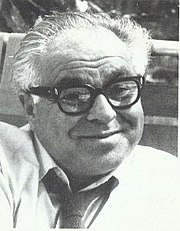Design
Design
Personality
Chart Properties
Your Cross represents the specific theme of your life. This cross embodies your unique potential & the lessons you're here to learn, providing a roadmap to fulfilling your life purpose.
We use the UTC birth time and date to do the calculations required to generate your Human Design chart.
Buy Tokens
Pay as you use, no expiry and no subscription required.Prompt Ideas
Get inspired with some epic prompt ideas.Gottfried von Bismarck-Schönhausen's Biography
German politician and German Resistance figure, also noted as a grandson of the Chancellor Otto von Bismarck. He was a member of the Nazi Party and in 1933 he was elected to the Reichstag as a Nazi member. In 1935 he became chairman of the regional council (Regierungspräsident) for Stettin, and later also for Potsdam. In 1937 he married a cousin, Countess Melanie Hoyos, in Vienna. By 1944 he held the rank of Brigadeführer (Brigade Leader/Major General) in the SS.
From 1942, however, Bismarck had been opposed to the continuation of World War II, and had made contact with other members of the German aristocracy who were working against the Nazi regime – such as the Berlin police chief Wolf-Heinrich Graf von Helldorf, Colonel Claus Graf von Stauffenberg, and General Friedrich Olbricht – with the aim of starting negotiations with the western Allies. He was aware of preparations for the 20 July plot to assassinate Adolf Hitler, but was not directly involved in it.
After the failure of the plot, Bismarck’s connections to the plotters were discovered. He was expelled from the SS and from the Reichstag. Because of his famous name and many powerful connections, however, he escaped the fate of most of the active plotters. He was not arrested until August and he was not tortured. In October he was acquitted of the charges against him by the People’s Court, but was nevertheless sent to Sachsenhausen concentration camp, where he was relatively well treated. He was liberated by Soviet forces in April 1945.
On 14 September 1949 Bismarck and his wife were killed in a suspicious car accident in Verden an der Aller near Bremen, in the American Occupation Zone.
Link to Wikipedia biography
Your Cross represents the specific theme of your life. This cross embodies your unique potential & the lessons you're here to learn, providing a roadmap to fulfilling your life purpose.
We use the UTC birth time and date to do the calculations required to generate your Human Design chart.





